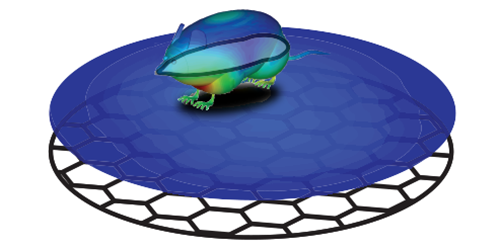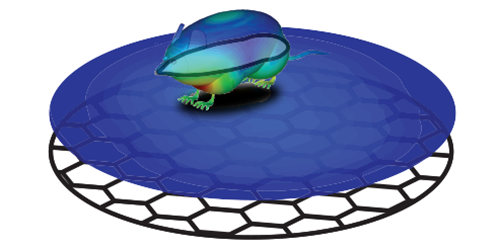Runaway Brain
To understand how brain activity is related to behavior, neuroscientists would like to stimulate the neurons of animals as they move, respond to their surroundings, or carry out tasks like searching for food. To allow the animals to move freely, brain-stimulation devices should be powered wirelessly, but available techniques have limited range or require bulky, head-mounted devices. Now, Ada Poon and co-workers at Stanford University in California have demonstrated a wireless scheme that powers tiny devices implanted in a mouse’s brain while permitting the animal to move over a large area.
In the authors’ experiments, a cylindrical radio frequency (RF) cavity, placed beneath a cage, leaks out energy through an array of small apertures. This energy is absorbed by miniaturized coils, which are implanted in the brain and drive a circuit that stimulates the neurons electrically. The setup designed by Poon and her colleagues exploits the characteristic resonant electromagnetic modes in the mouse to optimize the energy transfer from the cavity RF waves to the coils.
The authors showed that the device receives enough power to operate on the full area of the cage (about 16 centimeters in diameter), sufficient for a variety of behavioral experiments. In a proof-of-principle experiment, they stimulated, for 10 minutes, a mouse’s infralimbic cortex, a brain region related to mood disorders and anxiety, showing that they could increase neural activity in the targeted area. About the size of a grain of rice, the device is one hundred times smaller and lighter than those in previously reported schemes.
This research is published in Physical Review Applied.
–Matteo Rini





